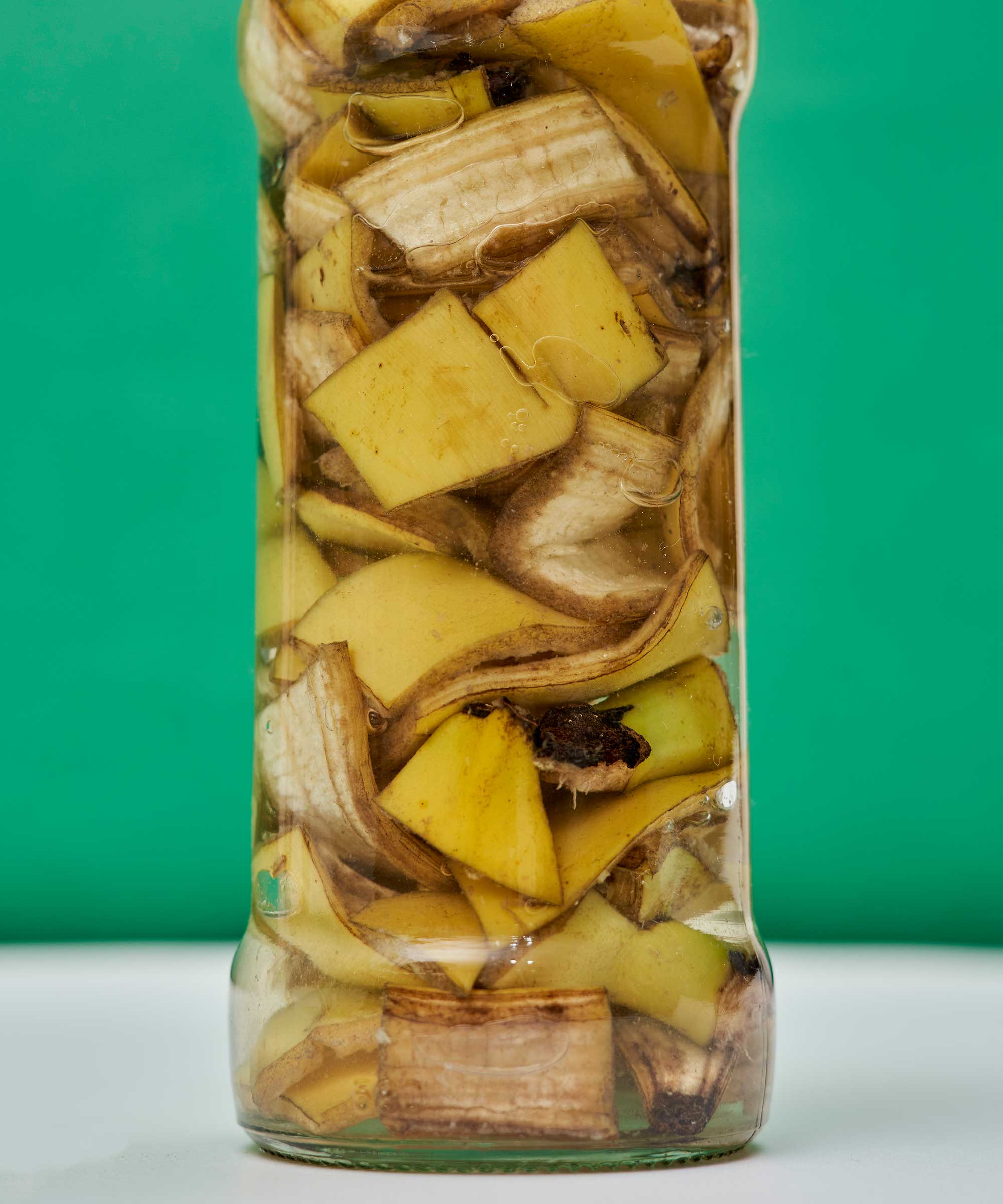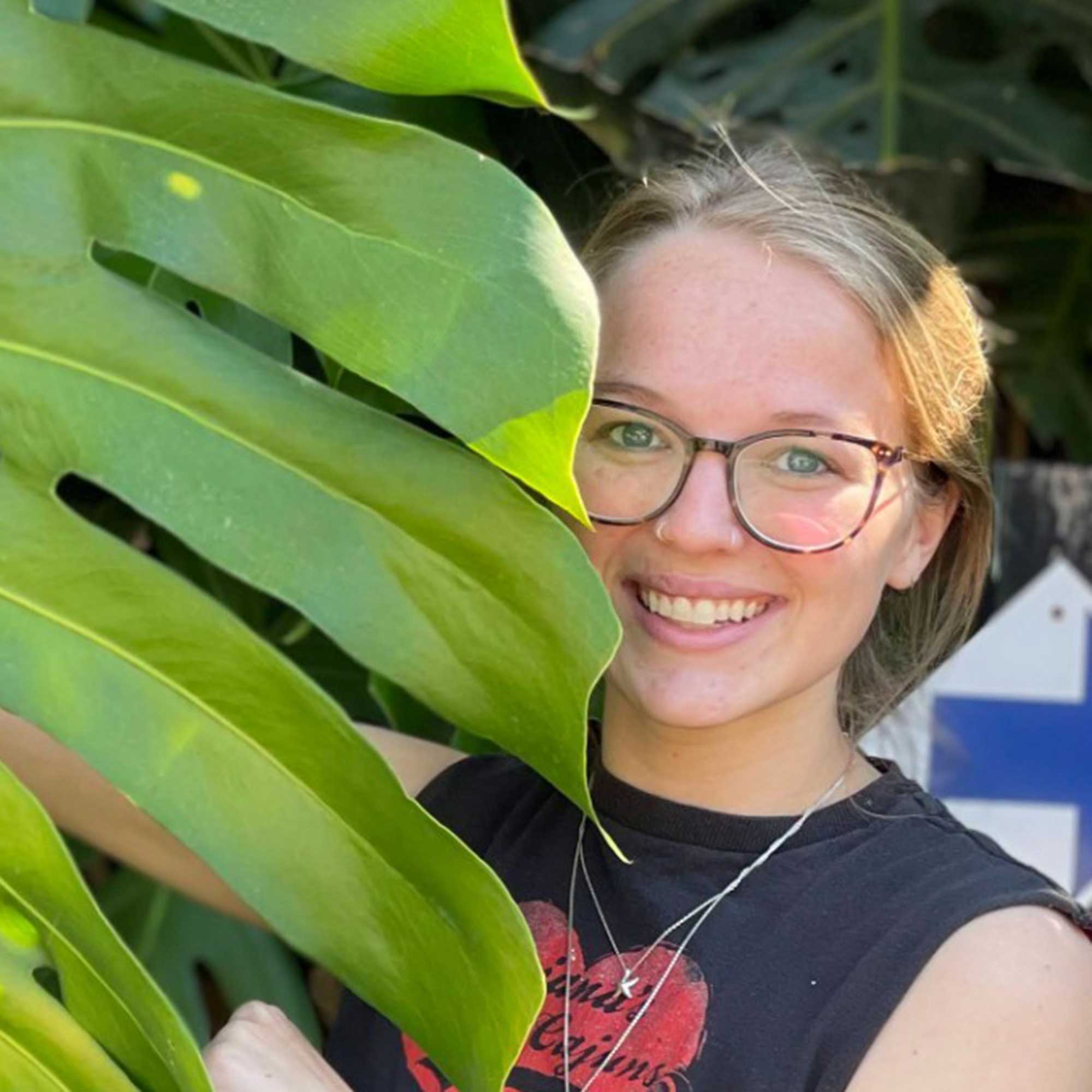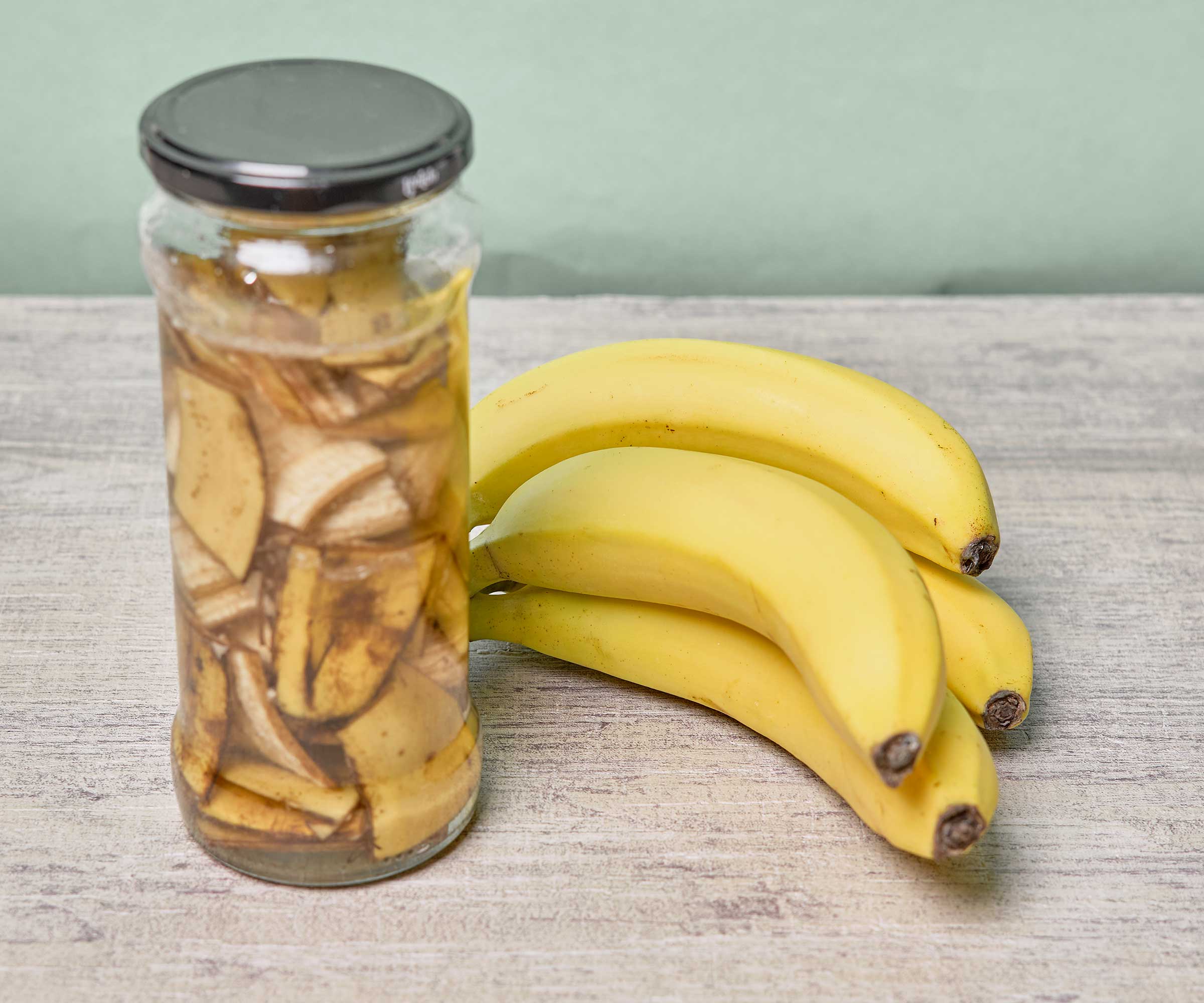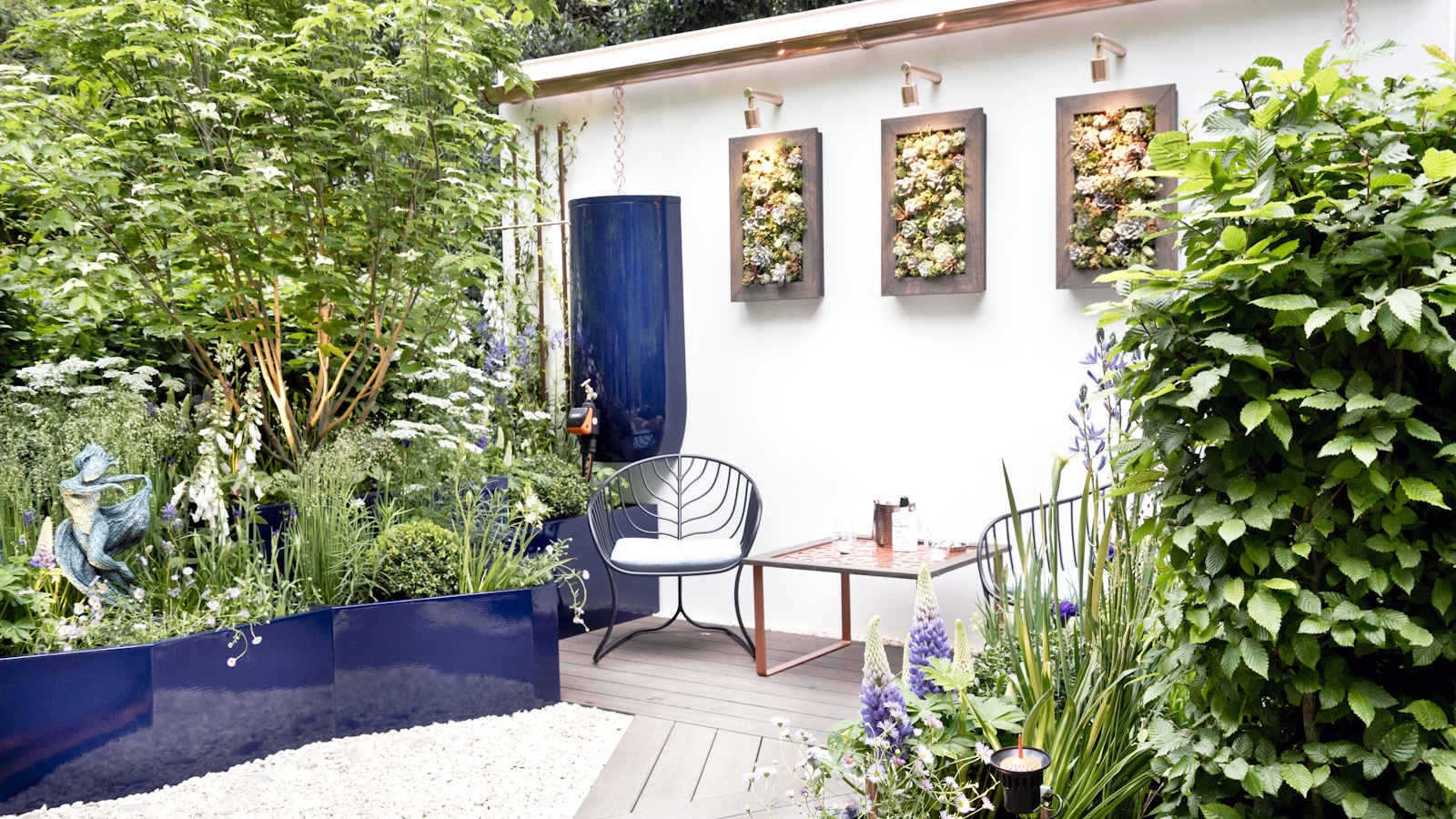Do plants like banana water? Gardening experts weigh in
The pros share their thoughts on this social media trend and explain how to try it at home


Q: Recently, I've seen lots of videos online about using 'banana water' on plants. The process looks pretty simple and apparently it's super beneficial, but is it really worth a try? I have lots of houseplants that could do with a boost, so am tempted to give it a go.
A: It's easy to see why this trend is sweeping social media. Like most homemade fertilizers, it's resourceful and cheap – and don't we all want a quick way to help our indoor plants thrive?
However, opinions on whether the viral videos actually work are mixed. To find out more, I asked gardening experts for their advice.
Do plants like banana water?

Banana water is easy to make – but is it worth it?
Kiersten Rankel of Greg, a plant-care app, says, 'The idea behind banana water is that banana peels are loaded with plant-friendly nutrients like potassium, phosphorus, and calcium. These can potentially help support strong roots, lush leaves, and even give flowering plants a boost. The sugars in the peels can also feed beneficial soil microbes.'
So far, so good. But, Kiersten says these benefits should be taken with a grain of salt. This is because the actual concentration of nutrients in banana water may not be high enough to have a significant impact on plant growth, she says. 'There's a lack of scientific research confirming the effectiveness of banana water as a fertilizer.'
What's more, Kiersten notes how the sugars in banana water can attract pests like fungus gnats, or even encourage fungal growth in the soil. 'This is especially true if you're using it too frequently or in combination with overwatering.'
If you still want to give it a go, Autumn Janus of Perfect Plants Nursery doesn't recommend depending solely on banana water for fertilizing your plants. 'It is best used in combination with a more potent fertilizer,' she says, suggesting the liquid fertilizer for indoor plants from Perfect Plants Nursery.

Kiersten Rankel is a certified Louisiana Master Naturalist and regularly volunteers with local community gardens and nonprofits to help restore critical ecosystems along the Gulf Coast. She earned her master's degree from Tulane University in Ecology and Evolutionary Biology after her undergraduate degree in Environmental Biology, also from Tulane. In her spare time, she enjoys hiking and tending to her 150+ houseplants and vegetable garden.

Autumn is a horticulture specialist and marketing professional at Perfect Plants Nursery. With four years of experience in the horticulture industry, she has developed a passion for helping people create beautiful indoor and outdoor spaces to enjoy. Her expertise in horticulture encompasses a broad range of activities, including plant care and selection, landscape design, and maintenance.
How to make banana water for plants

It only takes a few days to make banana water for your plants
With the above insights in mind, you shouldn't expect revolutionary results from this sustainable gardening trend. But, if you eat a lot of bananas and fancy an experiment, you might be tempted to try it anyway.
Just chop up a banana peel – go for organic if you can – and let it soak in water, Kiersten instructs. 'Once you notice bubbles forming (roughly two to three days), strain out the peel pieces in the morning, and voila; you've got banana water!'
Kiersten says you can either water your plants with it directly about once a week, or put it in a spray bottle for a foliar application every few days.
This glass mister from Offidix at Amazon has a cute vintage-inspired look, and is also great for increasing the humidity around houseplants.
FAQs
Can you use banana water on outdoor plants?
According to Jessica Mercer of Plant Addicts, you can use the water on both indoor and outdoor plants. So, you could try it out on your patio containers, too.
What can you use instead of banana water on plants?
Jessica Mercer of Plant Addicts recommends using compost or compost tea on your plants for a better source of balanced nutrition. 'The organic material in these products has been broken down by microorganisms into a usable form for plants,' she says. 'Compost also helps to improve soil structure, increasing aeration and moisture retention in the soil.' Other natural fertilizer options to explore include coffee grounds and eggshells.

Jessica Mercer, PhD, is the senior content marketing coordinator for Plant Addicts. As a plant collector, Jessica enjoys growing many different plants and learning about the best culture practices for each. Writing for Plant Addicts is a real joy for her, as she can use her science background to research interesting plant topics.
If you want to suss out this method yourself, Kiersten Rankel recommends starting slowly, observing carefully, and being ready to pivot if needed.
'At the end of the day, the foundation of healthy plants is a balanced diet, appropriate watering, and plenty of sunshine,' she adds.
Sign up to the Homes & Gardens newsletter
Design expertise in your inbox – from inspiring decorating ideas and beautiful celebrity homes to practical gardening advice and shopping round-ups.

Holly started writing about gardening five years ago, and she is a regular contributor to Homes & Gardens. She has also written many gardening features for Woman & Home and Real Homes, too. She has previous experience as a professional gardener, where she helped to plant and maintain private gardens. Holly has also looked after allotment plots over the years and loves to grow her own flowers and veggies from seed. In her spare time, she enjoys visiting local gardens, botanical drawing, and tending to her ever-growing collection of houseplants.
-
 Urban gardening ideas – 7 creative ways to grow in small spaces, balconies, containers, indoors, and more
Urban gardening ideas – 7 creative ways to grow in small spaces, balconies, containers, indoors, and moreMake the most of your space with these innovative ways to garden
By Tenielle Jordison
-
 'Sexy disco-era Italy meets Japanese farmhouse in the Brazilian jungle' was the description the interior designer gave this glass-walled modernist home
'Sexy disco-era Italy meets Japanese farmhouse in the Brazilian jungle' was the description the interior designer gave this glass-walled modernist homeOffering a warm welcome that defies its stark, modernist lines, this archictectural gem is full of surprises
By Karen Darlow